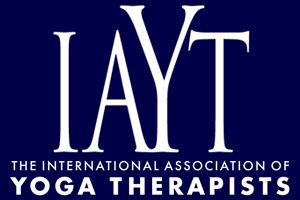Editorial Type:
Article Category: Research Article
| Online Publication Date: 17 Jul 2008
Harvesting the Full Potential of Group Yoga Therapy Classes
Harvesting the Full Potential of Group Yoga Therapy Classes
Page Range: 33 – 37
Group Yoga therapy is a valuable tool for supporting students with health challenges. This article describes the current use of group settings in Yoga, followed by steps Yoga therapists can adopt to build successful and sustainable group Yoga therapy programs. Curriculum design, participant skills, support materials, and business considerations are included in the discussion. The article also presents an argument for honoring and facilitating both the prescriptive and process aspects of Yoga therapy.
Jain SC, Talukdar B. Evaluation of yoga therapy programme for patients of bronchial asthma. Singapore Medical Journal. 1993;34(4):306-308.
Raju PS, Madhavi S, Prasad KV et al. Comparison of effects of yoga & physical exercise in athletes. Indian Journal of Medical Research. 1994;100:81-86.
Raghuraj P, Nagarathna R, Nagendra HR et al. Pranayama increases grip strength without lateralized effects. Indian Journal of Physiology & Pharmacology. 1997;41(2):129-33.
Kabat-Zinn J. An outpatient program in behavioral medicine for chronic pain patients based on the practice of mindfulness meditation: theoretical considerations and preliminary results. General Hospital Psychiatry. 1982;4(1):33-47.
Ornish D, Scherwitz L, Billings JH et al. Intensive lifestyle changes for reversal of coronary heart disease. JAMA. 1998;280(23):2001-2007.
Garfinkel MS, Singhal A, Katz WA et al. Yoga-based intervention for carpal tunnel syndrome. JAMA. 1998;280(18):1601-1603.
Sherman KJ, Cherkin DC, Erro J, Miglioretti DL, Deyo RA. Comparing yoga, exercise, and a self-care book for chronic low back pain: a randomized, controlled trial. Annals of Internal Medicine. 2005;143(12):849-856.
Mezirow J. Learning as Transformation. San Francisco: Jossey-Bass; 2000.
Taylor MJ. Risk management: Conscious ahimsa (non-violence). International Journal of Yoga Therapy. 2004;14:87-92.
Heron J, Reason P. A participatory inquiry paradigm. Qualitative Inquiry. 1997;3(3): 274–294.
Cameron, C. Patient compliance: recognition of factors involved and suggestions for promoting compliance with therapeutic regimens. Journal of Advanced Nursing. 1996;24:244–250.
Kerssens JJ, Sluijs EM, Verhaak PFM, Knibbe HJ, Hermans IM. Back care instructions in physical therapy: a trend analysis of individualized back care programs. Physical Therapy. 1999;79:286–295.
Johnson M, Kazantzis N. Cognitive behavioral therapy for chronic pain: strategies for the successful use of homework assignments. Journal of Rational-Emotive and Cognitive-Behavior Therapy. 2004;22(3):138–149.
Bera TK, Rajapurkar MV. Body composition, cardiovascular endurance and anaerobic power of yogic practitioner. Indian Journal of Physiology & Pharmacology. 1993;37(3):225-228.
